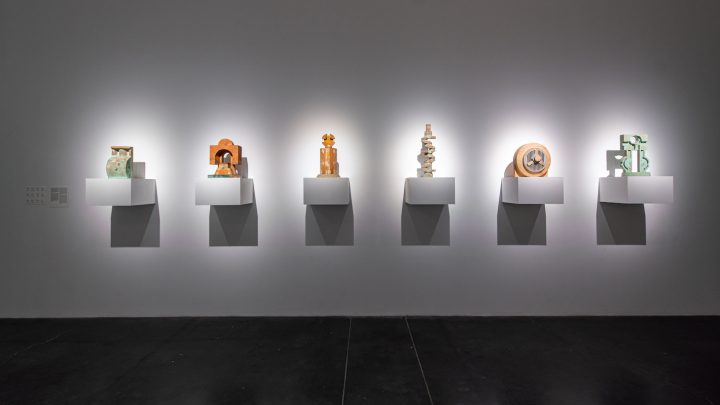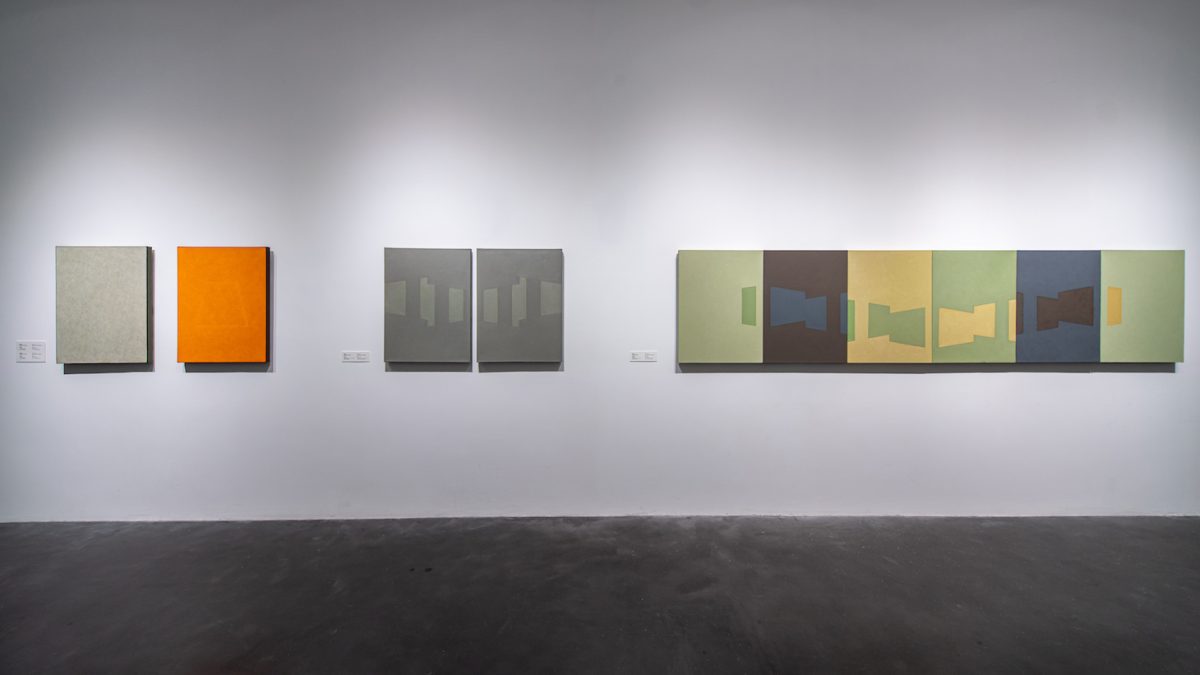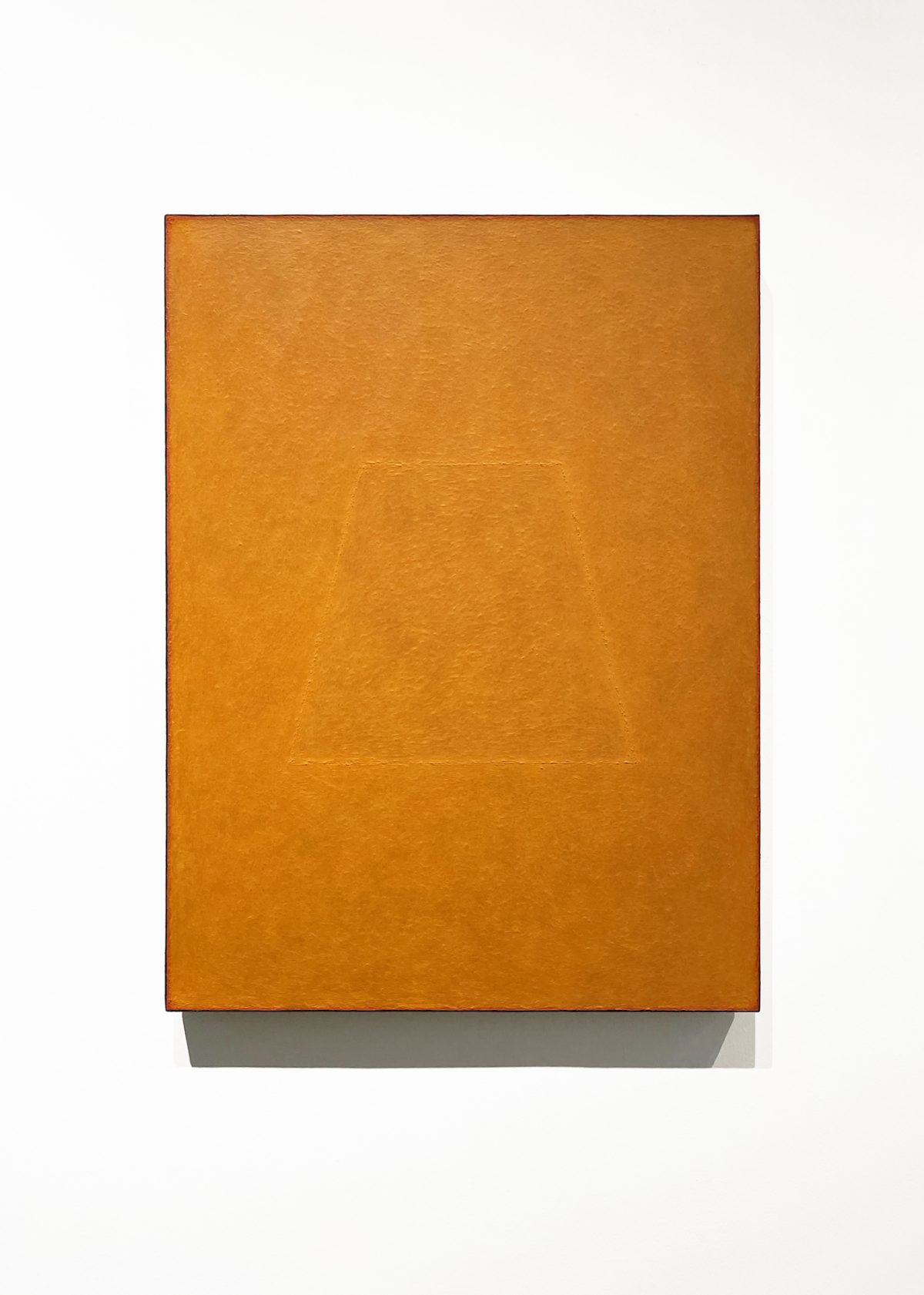
BEIJING — Just as European art has long been influenced by that of nonwestern cultures, in postwar America artists witnessed the spread of Zen Buddhism promulgated by the prominent Japanese scholar D. T. Suzuki. Notable artists and intellectuals, such as John Cage, Robert Rauschenberg, Agnes Martin, and Ad Reinhardt, attended Suzuki’s lectures at Columbia University in the 1950s, and the connections between Zen and creativity demonstrated in Suzuki’s writings occupied their general discussions.
Silent Thunder, currently on view at the UCCA Center for Contemporary Art, curated by Neil Zhang, a PhD candidate in Religious Studies at Columbia University, continues to examine this history of cultural fermentation and pollination.
The history of Buddhist art witnessed a diversity of expressions, including temples, stupas, Buddhist statues, grottoes, and other religious objects across Buddhist Asia. The work of ancient Chinese Zen Buddhist poets and painters such as Wang Wei represents another type of expression, poetic and visual embodiments of the Buddhist idea of emptiness. Cage’s “4’33’’” (1952) and Rauschenberg’s “White Painting” (1951) sought to translate this emptiness into artistic expressions. Intrigued by the ubiquitous traces or primary influence of Buddhism in the works of contemporary Chinese artists, Zhang discovered a largely unexplored terrain in the convergence of contemporary art and Zen Buddhism in present-day China, where Zen originated.

Chinese artists have a relationship with Buddhism that is both historical and current, spiritual and quotidian, personal and communal, poetic and aesthetic, as a result of Buddhism’s integration with local Chinese culture for nearly 2000 years. Silent Thunder explores the impact of Buddhism’s global transmission and appropriation by modern Western artists on the work of Chinese artists today.
The four artists featured in Silent Thunder — Shao Yi, Chen Lizhu, Chu Bingchao, and Liao Fei — display varying degrees of engagement with Buddhism, as a faith, an aesthetic choice, a school of philosophy, or a social phenomenon. Shao Yi, who is part of a Sangha, a Buddhist community, and has studied Buddhist scripture under a guru, maintains a deep relationship with Buddhism. He has been ordained as a monk and abides by monastic codes. During our conversation regarding his art education in China in the 1980s, Shao paid homage to Robert Rauschenberg, who freed him from academic constraints and prescribed approaches to his materials when Shao was an art student.

Shao’s sculpture series, Totem Producing, represents the interrelationship of his Buddhist beliefs and art practice, inspired by Rauschenberg’s incorporation of found materials. Shao reconstructed industrial materials and objects, such as wooden molds salvaged from factories, into enigmatic objects reminiscent of the iconography and symbols of early Buddhist art in India. Their titles derive from dharani, incantations that Shao has practiced chanting, such as “Dulu Dulu” and “Shina Shina.” The sounds of the dharani mystify the industrial origins of the objects; any attempt to define the art is complicated by the clash between the sacredness of the incantations and the banality of the everyday materials. One of the koans the curator selected to accompany the exhibition speaks to this experience:
According to Seigen Ishin (Ch’ing-yüan Wei-hsin): “Before a man studies Zen, to him mountains are mountains and waters are waters; after he gets an insight into the truth of Zen through the instruction of a good master, mountains to him are not mountains and waters are not waters; but after this when he really attains to the abode of rest, mountains are once more mountains and waters are waters.” (Excerpt from Universal Lamp Records of the Jiatai Era, translated by D. T. Suzuki, Essays in Zen Buddhism, 1926)

Shao Yi’s sculptures reconfigure meaning through material manipulation. The works reflect the riddles and paradoxes of koans, which reveal the limitation of language to render reality, as the artist aims to bring about a transformative experience similar to a moment of satori, or enlightenment.
Liao Fei seeks his philosophical references not in Buddhism, but Greek thoughts, science, and logic. “A Straight Line Extended” is a sculptural assemblage that can extend infinitely on both ends while maintaining perfect balance, held by gravity alone. While Liao uses stone and metal, his primary materials are gravity and space, making the invisible manifest through mathematical arrangement and calculations.
Of all the exhibition’s artists, Chu Bingchao is the most controversial, not because he is an outsider to the Buddhist belief, practice, and community, but because of his quasi-anthropological approach to the history and current industry of Buddhist statue-making in China. In his previous work, “I Buddha” (2014), Chu restored 50 damaged and weathered Buddhist statues in the unguarded wilderness, without any professional training or approval of the local cultural heritage authorities, by incorporating his own facial features.

One might wonder how the ravages of time and war can be fixed by an onlooker whose engagement with Buddhism, as a belief or subject of study, is questionable. However, we should also be wary of reductive attitudes toward new attempts to understand the old, given that D. T. Suzuki’s interpretation of Zen has also been the target of harsh critique, yet it still yields many fruit in the arts.
Chen Lizhu, the only artist represented by paintings, addresses the reimportation of Buddhism into contemporary art through Western modernism, especially Abstract Expressionism associated with the Buddhist idea of emptiness. Chen, who studied art in the Netherlands, brings eclectic influences and references to her work. Her abstract color fields trace back to both Mark Rothko and De Stijl. However, her approach deviates subtly from Rothko’s as she draws on her Buddhist meditation practice and the color schemes of Buddhist mural paintings in Dunhuang, China.
Contrary to Rothko’s absorbent canvases, on which paint layers sink in and overlap into an infinitely deepening hue that engulfs the viewer’s senses, Chen’s matte surfaces, resembling egg tempera painting, allow the painter’s marks to layer atop one another. While both artists pay special attention to the painting’s borders, as they define the edge of consciousness, they differ dramatically in scale. Chen’s smaller works render her spiritual vision an “object” to behold, as she directs her viewer to ruminate on the inner cosmos.

The similarity between her spiritual imagery and Rothko’s, derived from disparate religious pursuits, evokes Carl Jung’s concept of the collective unconscious. Yet, could it also say something about the canonization of American Abstract Expressionism that has come to fully embody the essence of Buddhist thought in the contemporary art epoch?
Koan anthologies from the Song Dynasty often cite the metaphor “transmission of the lamp” to describe the process of imparting Buddhist doctrines; the light penetrates darkness and leads to enlightenment. The mutual appropriation and influence in art and thought that we have observed in the strand of Buddhism’s historical and global scope is one such transmission,
[…] from heart to heart, the tacit utterance coming to the continued burning of lamp to lamp, the united fragrance of generation upon generation, linking the numinous seeds in a spring without decline. (Records of the Transmission of the Lamp)
This lamp knows no East or West, old or new, self or other, but only the mind that seeks light.
Silent Thunder continues at UCCA Center for Contemporary Art, Beijing (798 Art District No. 4, Jiuxianqiao Road, Chaoyang District, Beijing, China) through May 23.
0 Commentaires